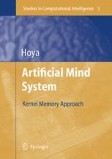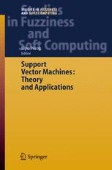Search
Search Results
-
The Kernel Memory Concept – A Paradigm Shift from Conventional Connectionism
In this chapter, the general concept of kernel memory (KM) is described, which is given as the basis for not only representing the general notion of...
-
Modelling Abstract Notions Relevant to the Mind and the Associated Modules
This chapter is devoted to the remaining four modules within the AMS, i.e. 1) attention, 2) emotion, 3) intention, and 4) intuition module, and their...
-
The Many Faces of a Kohonen Map A Case Study: SOM-based Clustering for On-Line Fraud Behavior Classification
The Self-Organizing Map (SOM) is an excellent tool for exploratory data analysis. It projects the input space on prototypes of a low-dimensional...
-
Data Mining and User Profiling for an E-Commerce System
Many companies are now develo** an online internet presence to sell or promote their products and services. The data generated by e-commerce sites...
-
Discovery of Fuzzy Multiple-Level Web Browsing Patterns
Web usage mining is the application of data mining techniques to discover usage patterns from web data. It can be used to better understand web usage...
-
Comparison Between Five Classifiers for Automatic Scoring of Human Sleep Recordings
The aim of this work is to compare the performances of 5 classifiers (linear and quadratic classifiers, k nearest neighbors, Parzen kernels and...
-
A Probabilistic Approach to Mining Fuzzy Frequent Patterns
Deriving association rules is a typical task in data mining. The problem was originally defined for transactions of discrete items, but it was soon...
-
Analysis and Architecture of Clinical Workflow Systems using Agent-Oriented Lifecycle Models
Healthcare executives are grappling with a climate of great change in the healthcare industry. This is coming from a number of sources. First, there...
-
A Qualitative Approach for Symbolic Data Manipulation Under Uncertainty
In decision making problems, the experts knowledge has different natures: numerical, interval-valued, symbolic, linguistic, . . . In other terms, the...
-
Set-valued Data
Since fuzzy sets are generalizations of ordinary sets, we present in this Chapter the essentials of random set theory for statistics. This material...
-
Bioinformatics with Evolutionary Computation
This chapter makes the presumption that it is more important to understand the domain of the problem of interest and to pursue the best achievable...
-
5 Case Studies
This section demonstrates our hybrid estimation scheme on the basis of the illustrative 3-component cPHA and the BIO-Plex process automation example...
-
INTELLIGENT MUSICAL INSTRUMENT SOUND CLASSIFICATION
This chapter is devoted to intelligent classification of the sound of musical instruments. Although it is possible, and in some applications...
-
INTRODUCTION
Over the last decade, a series of publications has brought and established new research areas related to music, and intensified the research verging...
-
Virtual Reality in Healthcare
In our modern 21st century, daily life would be unthinkable without computers. Multimedia and virtual reality are useful for people with special...
-
Access to Information on Demand by the aid of Digital Talking Books
This chapter addresses the concept and the fundamental ideas of the digital talking book (DTB), with a particular focus on DTBs in the DAISY format....
-
Measuring User Satisfaction in Web Searching
Search engines are among the most popular as well as useful services on the web. But the problem we face is due to the large number of search engines...
-
A Fuzzy Method for Learning Simple Boolean Formulas from Examples
We discuss a method for inferring Boolean functions from examples. The method is inherently fuzzy in two respects: i) we work with a pair of formulas...
-
1 Introduction
The problem of position control of robot manipulators was addressed in the 1970’s to develop control schemes capable of controlling a manipulator’s...
-
Kernel Discriminant Learning with Application to Face Recognition
When applied to high-dimensional pattern classification tasks such as face recognition, traditional kernel discriminant analysis methods often suffer...
